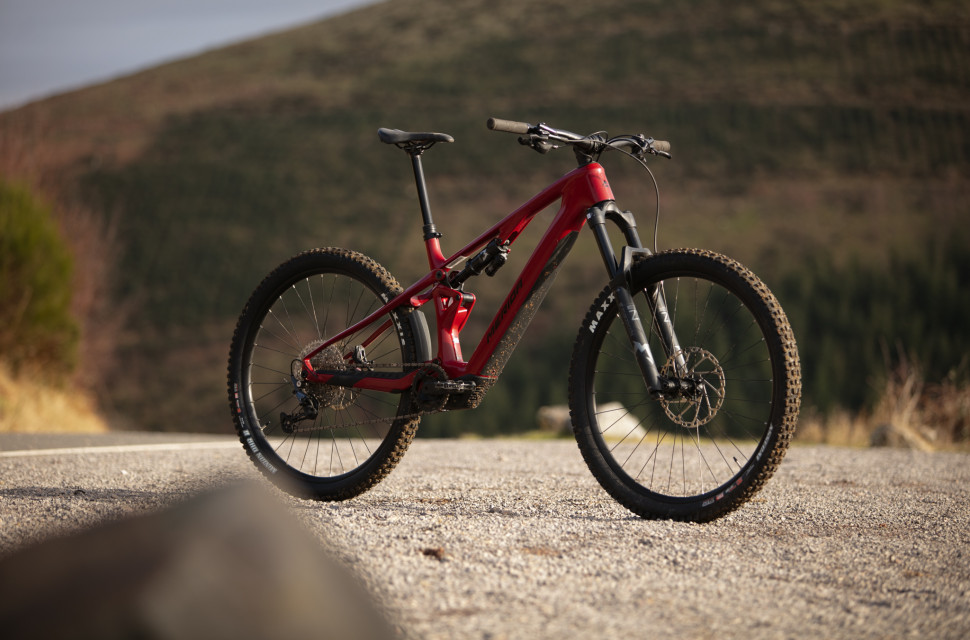
- Agile on the trail
- Stable climber
- Competent base spec
- Front end is a bit low for the steeps
- Bosch SX motor needs high cadence
- Consider a thicker casing rear tyre
The Merida eOne-Sixty SL is a lightweight e-mountain bike that uses a 55Nm Bosch motor and 400Wh battery to give a rewarding and lively ride. Thanks to some well-sorted geometry, climbing is an efficient and well-balanced affair, it's stable at speed and it remains manoeuvrable. However, the low front end does affect performance on steep descents.
- Best e-MTBs 2025 - top-performing e-mountain bikes for every situation
- Merida eOne-Sixty 875 e-MTB review
- E-MTB geometry explained: how weight and geometry affect your ride
Merida eOne-Sixty SL 6000 - Technical details
The eOne-Sixty SL is built around the Bosch Performance Line SX motor, which puts out 55Nm of torque, accompanied by a 400Wh battery and the option for an additional 250Wh range extender. The system is controlled using Bosch’s Purion display which gives a whole host of stats for your ride, including battery percentage, assistance level and predicted range.
The carbon fibre frame delivers 160mm of rear travel through the use of a traditional linkage-driven single-pivot layout. Less commonly seen, especially on an e-bike, is the lack of pivot near the rear axle as Merida has chosen to equip the eOne-Sixty SL with flex stays instead – a system more commonly found on cross-country bikes.
A pair of flip chips found between the seat stay and rocker link allows the use of a 29” or 27.5” rear wheel – all bikes come standard with 29”. Merida has worked to keep the suspension kinematics similar between the two settings, though in the 27.5” setting the rear travel increases to 174mm. The kinematic has been tuned to give the bike a stable pedalling platform at sag while remaining active throughout the travel with a progression curve that is tuned specifically for an air shock.
Love or hate it, Merida has used headset cable routing on the eOne-Sixty. Along with the internal frame routing it does give a very clean look and the brand has worked to better seal the headset in a bid to reduce maintenance. Four bolts at the bottom of the downtube keep the battery rail secure and double up as a bottle cage mount, though there is no provision for an accessory mount.
There's plenty of rubber protection around the chainstay to keep chain slap to a minimum and protect from heel rub, with more rubber on the downtube to protect the frame against rock strikes. A handy little mudguard is tucked in front of the rear wheel to keep the swing arm pivot protected from mud and debris.
The eOne-Sixty SL is available in five sizes (XS-XL) and three colours (sand, grey and red).
When it comes to geometry, the eOne-Sixty SL is right up to date, with numbers that will provide a stable ride. Reach numbers start at 420mm and grow 23mm per size, with the large sitting at 489mm – right where I’d like it to be. A 64-degree head angle gives a nice balance between being manoeuvrable yet still stable at speed, while the 450mm chainstays lean more towards stability.
A seat angle of 78.5 degrees is perhaps a little on the steep side, particularly for an e-mountain bike where efficiency can be sacrificed in the name of comfort. On the plus side, a straight seat tube is great to see, with plenty of room for a long dropper. On that note, the bike is specified with a generous-length dropper which is size-specific – this large frame gets a 200mm dropper. The stack height is on the low side, which will help with weighting the front tyre for grip but could be less inspiring on the steeps.
At least on paper, this should result in a bike that is stable at speed yet still lively enough on technical trails.
Merida eOne-Sixty SL 6000 - Componentry
The eOne-Sixty SL comes in three specifications, the 6000, 8000 and 10000. The entry-level 6000 retails at £6,000 and uses a range of entry-level Shimano componentry. The brakes, drivetrain and hubs are Shimano variants that are budget but perfectly functional. The suspension components are from Marzocchi – a Z1 fork and Bomber Air rear shock.
Maxxis supplies the tyres and they give plenty of grip – a MaxxGrip Assegai up front and more durable MaxxTerra DHR II at the rear, although in relatively thin Exo+ casings. Merida’s own Expert range finishes off the build covering the bar, stem, rims and seatpost. Claimed weight is 20.8kg.
Moving up to the 8000 model, it retails for £7,500 and upgrades to a wireless SRAM GX drivetrain and SRAM DB8 Stealth brakes. Rockshox handles the suspension with a Lyrik Select+ fork and a Super Deluxe Select+ shock. The wheels also see an upgrade to DT Swiss HX 1700. Claimed weight is 20.3kg.
The top-spec 10k model comes in at £9,500 and gets treated to some serious bling. The SRAM wireless drivetrain gets upgraded to the top-tier XX variant, brakes get all the power with the Mavern Ultimates, and suspension is now a Fox affair with a 36 factory fork and Float X factory rear shock. Raceface ERA carbon bars and FSA SC I30 carbon wheels round out this spec level. Claimed weight is 19.5kg.
As a handy little extra, a Merida multi-tool is included, mounted to the seat rails, and there is a 6mm Allen key nestled into the rear axle.
Merida eOne-Sixty SL 6000 - Set-up
Suspension set-up is always a bit of a faff and although Merida provides generic guidance on its website for setting sag, there are no specific settings for the eOne-Sixty SL. The Marzocchi Z1 fork has a handy table on the fork leg which gave me 110psi as a starter, but the rear shock took some more guesswork, eventually settling at 170psi for just shy of 30% sag. The rebound was set quite fast to my preference, and after a couple of car park bounces I got the front and rear rebound feeling balanced.
The wheels come tubeless ready but during the test, they had tubes fitted. With the Exo+ casings, I opted to run slightly more pressure than usual, settling on 26psi in the rear and 24psi in the front.
Bosch's eBike Flow app is worth downloading to make changes to the set-up of the motor, allowing you to adjust the different assistance modes.
Merida eOne-Sixty SL 6000 – Performance
Initial impressions of the eOne-Sixty SL were positive. The bike looks well put together and, upon further inspection, the carbon fibre work on the inside of the frame looks very well finished. I really dig the look of the bike; aesthetically it is well-proportioned with good lines and the sharp angular lines give a purposeful look.
Flex stays are less common on longer travel bikes, particularly e-bikes (with the exception of the Cannondale Monterra SL) so there was some trepidation on how well these would work. I am happy to report that they perform well, providing a lively, playful and snappy ride – impressive considering the 20kg being hauled around. I can’t go as far as to say it's like riding an analogue bike but it's about as close as you’ll get.
While this lively nature makes changing lines and popping mid-trail gaps rewarding, I have found that under braking, rear-end traction is sacrificed a little, with the rear wheel tending to skip across the rough stuff a little more than I’d expect for a 20kg bike.
The long chainstays and relatively long reach provide stability on the steeps, but the low front end reduced my confidence a little. This was easily rectified with a higher-rise bar to bring my riding position up, so it's worth considering your bar height if you’re feeling too far over the front on the steep descents. I was thankful for the generous length of the dropper post while descending; kudos to Merida for fitting a sensible length dropper post – this is rarer than you would think.
The seat angle is steep on the eOne-Sixty SL, and gives a strong position for seated climbing; it does put more weight onto your hands/arms but is a small price to pay for the improved pedalling efficiency. Along with the 450mm chainstays, it makes climbing steep and technical terrain a breeze, though I have found that for the best assistance the Performance Line SX motor rewards high-cadence pedalling. While pedalling, the first part of the suspension is quite active, which could rob you of some pedalling efficiency, but that’s less of a concern on an e-mountain bike; the upside is plenty of traction while the rear wheel is tracking the terrain.
The rear mudguard is worth a mention; it did a great job of keeping the worst of the mud away from the frame pivots which can only be a good thing for longevity and maintenance.
On the 6000 spec bike, the Marzocchi suspension did a great job for this price point, working above expectations, though it didn't cope too well with repeated hits. While the Shimano brakes feel solid with a good initial bite, I found a couple of situations where I wanted to stop quicker than they’d allow; for the price point they work fine, but personally, I’d look to upgrade to something with more power.
A final note to include here is an issue I had with the FSA crank arms and motor interface. This uses an ISIS interface, with a single 8mm bolt on each crank arm providing an interference fit onto the motor spindle. Unfortunately, my non-drive-side bolt fell out and subsequently so did the crank arm. On checking the drive-side crank bolt, this was also on its way out. Not really the fault of the bike, crank or motor, but something worth keeping an eye on if you have crank arms bolting to motor spindles.
Merida eOne-Sixty SL 6000 - Verdict
The 6000 spec bike on test retails at £5,500, which is pretty sensible money for a great-riding semi-skimmed e-bike. Of course, there is some hotly contested competition from the likes of Specialized and Canyon.
Arguably, Specialized is one of the leaders in this department and its Levo SL should always be a consideration. The Carbon comp version is currently £6,250 and comes with powerful SRAM Mavern brakes and a wireless drivetrain. It runs a 29/27.5 mullet set-up, has slightly less torque at 50Nm and a smaller 320Wh battery.
Canyon’s Spectral:ONfly CLLCTV is another option, at £6,800, with a 160mm fork up front and a TQ motor that outputs 50Nm of torque using a 360Wh battery. It was praised for its lively and engaging ride, but you’ll need to pay attention to sizing as they’re big bikes.
The Merida eOne-Sixty SL is a lively and active ride that makes changing line and nailing mid-trail gaps a lot of fun. Its agility and manoeuvrability are a credit, with geometry that promotes a stable ride. The front end is a little low, which reduces confidence on steep descents, and some of the spec choices such as the brakes would benefit from an upgrade, but it’s a solid entry-level offering from Merida.
You might also like:
About the bike
Tell us what the bike is for, and who it's aimed at. What do the manufacturers say about it? How does that compare to your own :
State the frame material and method of construction. List the components used to build up the bike.:
Our trail and enduro-ready perfect blend of price and performance. The eONE-SIXTY 6000 combines our latest 160 mm full carbon e-enduro frame with the compact and lightweight Bosch Performance Line SX drivetrain to create one of the most agile and fun-to-ride e-enduros in our range. With almost 'human-powered' handling and a powerful 55 Nm of assistance to kick in when needed, the eONE-SIXTY 6000 is the ideal machine for trail and enduro riders looking for maximum trail fun while enjoying an active riding style.











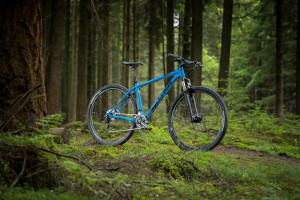
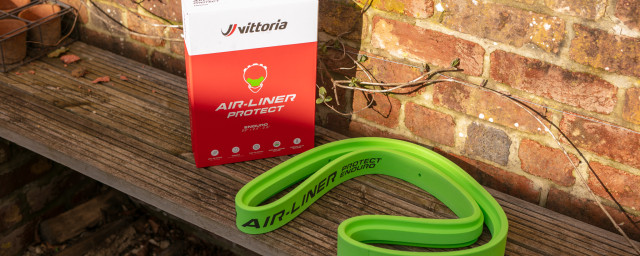
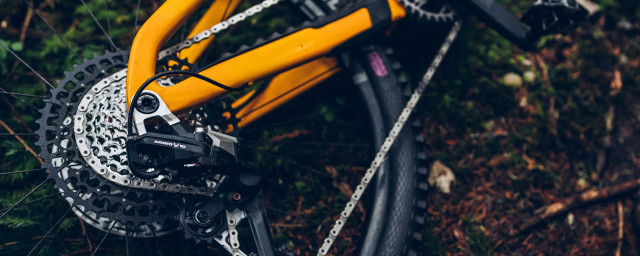

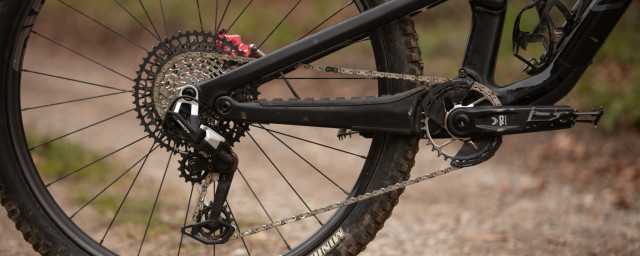
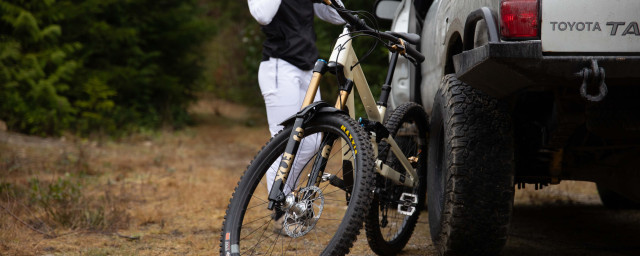
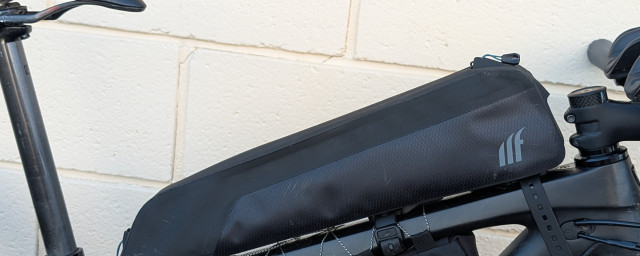
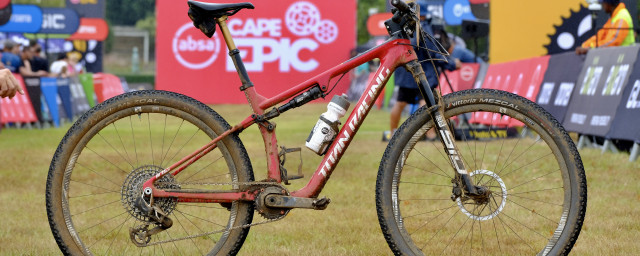
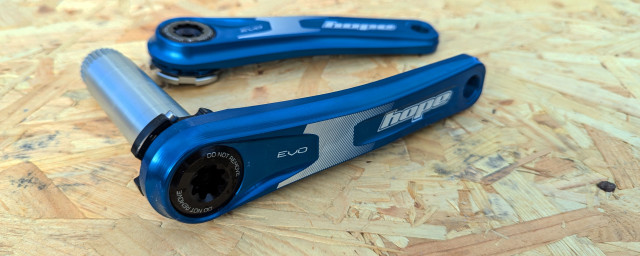
Add comment